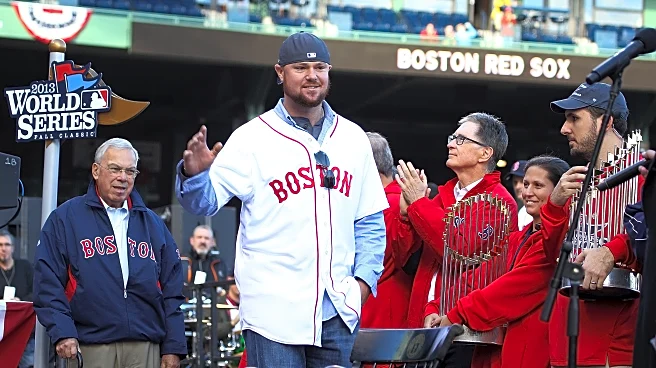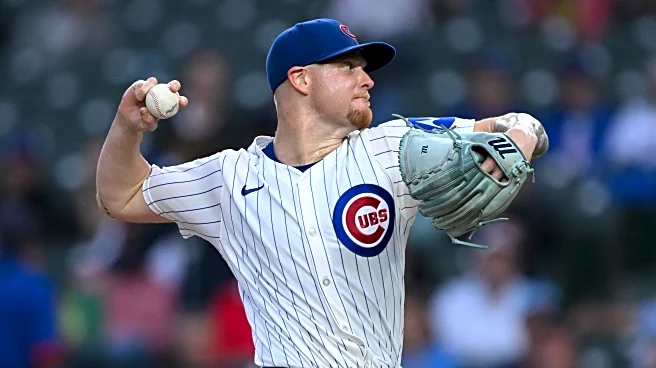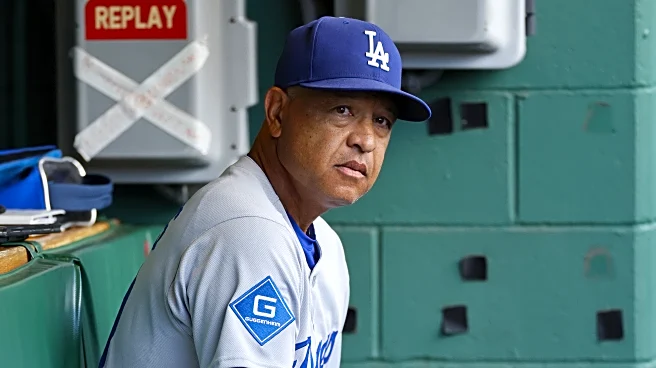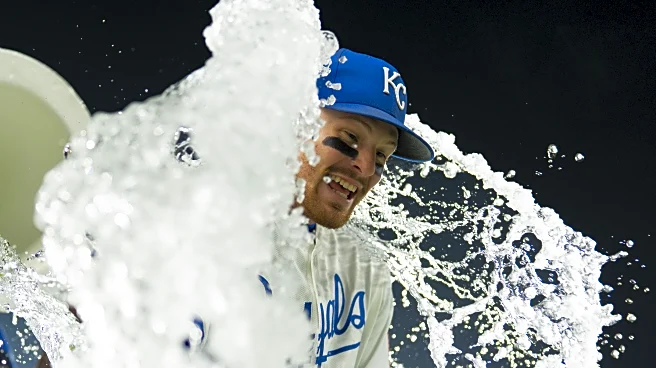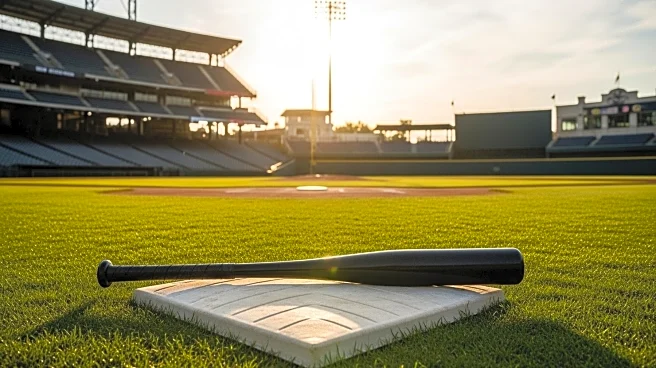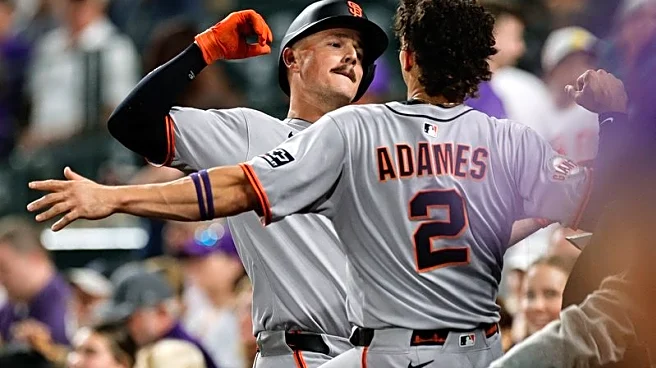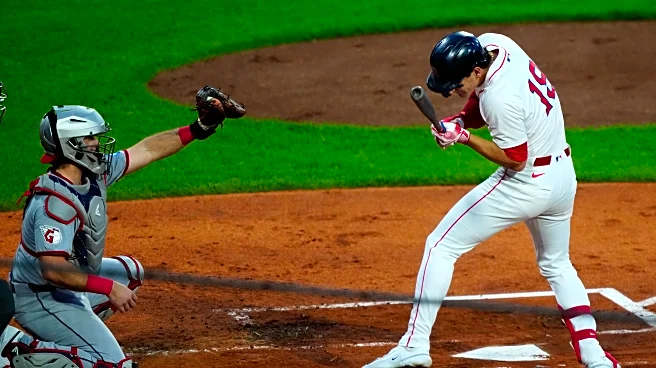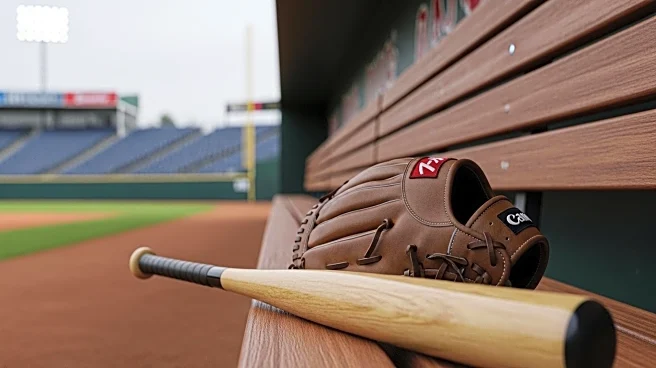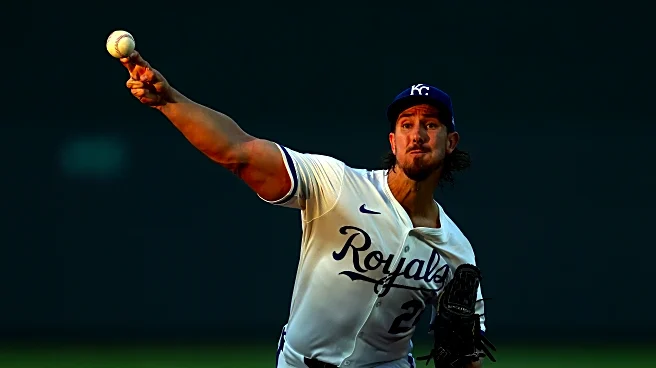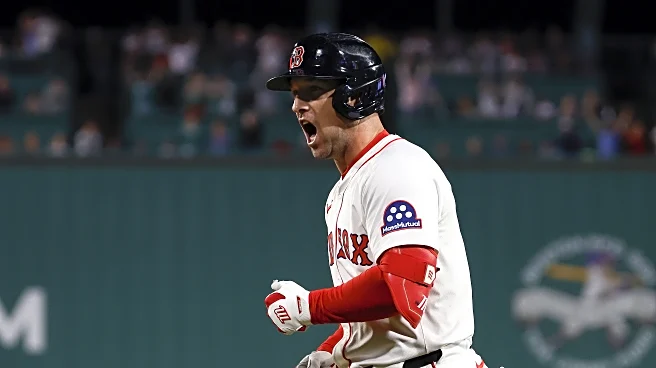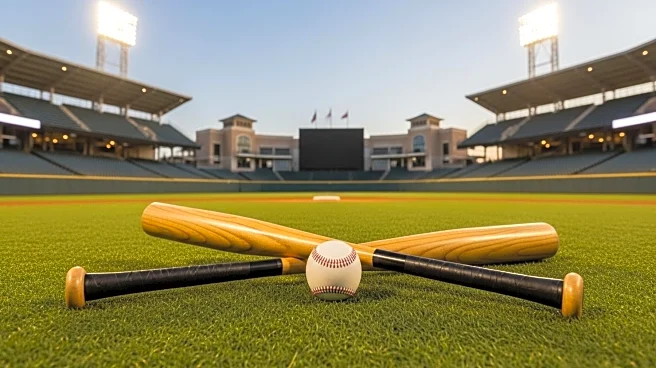
Could (insert pitching prospect here) be the first front-of-the-rotation arm that the Red Sox have drafted and developed since Jon Lester?
A question that I, and countless others, have uttered thousands of times in recent years now applies to Payton Tolle. For the first time, that question feels like it could be a “Yes,” last night’s results notwithstanding. But how many times have we been reeled in by that possibility over the last 20 years?
Jon Lester played the first nine seasons of a 16-year big
league career with the Red Sox, debuting in 2006 and getting traded in 2014 to Oakland, for a two-month stint that helped bring the A’s to the playoffs. Lester then spent six seasons with the Cubs before a forgettable final season in 2021 with the Nationals and the Cardinals. In that time, he won three World Series titles, an NLCS MVP, and made five All-Star teams. He amassed a cumulative 43.5 bWAR in his career, 29.9 of which came with the Red Sox.
We are now creeping up on two decades since the Red Sox drafted and developed a front-of-the-rotation starting pitcher, and frankly, no one has even come close to that designation. I came up with 15 names that could have been “The Next Lester” (some with higher expectations than others). The most successful of anyone in that group is Justin Masterson, who tallied 10.0 career WAR. The list is mostly a long line of pitchers who shifted to relief roles in the minor leagues, or shortly after making the major leagues, as well as pitchers with a ton of Tommy John surgeries.
Some would say that Clay Buchholz should count. Buchholz came up in 2007, threw a no-hitter that September, and spent ten seasons with the Red Sox, pitching in the rotation for their 2013 World Series title. If you want to count Clay, you can, and amend this list to “since 2007”. I wouldn’t, personally, but I understand the argument.
Daniel Bard – Drafted 2006 (Round 1), Debuted 2009
BOS bWAR 4.1, Career bWAR 8.3. Career ERA 3.74, 408 Games (10 GS)

Initially viewed as a starter, Bard transitioned to a relief role in the minors in 2008, before a 2009 debut with the Red Sox, where he put up a 2.88 ERA over his first three seasons. Bobby Valentine inexplicably shifted Bard to a starting pitcher in 2012, where he lost his velocity, put up a 6.22 ERA, and walked more batters than he struck out. The control issues led to Bard being out of the big leagues for 6+ years, at times pitching in independent ball, before a return to the Colorado Rockies, saving 61 games in four seasons from 2020-2023. Bard announced his retirement in July of this year.
Justin Masterson – Drafted 2006 (Round 2), Debuted 2008
BOS bWAR 2.9, Career bWAR 10.0. Career ERA 4.31, 258 Games (184 GS)

Not to be confused with Gas Masterson (Eck-speak for a hard-throwing pitcher) or Stats Masterson (Eck-speak for Alex Speier), Justin Masterson threw 160 innings with the Red Sox before being moved at the trade deadline in 2009 to Cleveland for Victor Martinez. He put together a decent career, logging 180+ innings in four consecutive seasons as a starter for Cleveland, and was an All-Star in 2013, before finishing his career back in Boston in 2015.
Casey Kelly – Drafted 2008 (Round 1), Debuted 2012 (with SDP)
Career bWAR -1.1, Career ERA 5.34, 30 Games (12 GS)

The most shocking thing that I learned while researching this piece is that Casey Kelly pitched in the Major Leagues this season for the Arizona Diamondbacks. Once the top pitching prospect for the Sox, Kelly was moved along with Anthony Rizzo to San Diego, in return for Adrian Gonzalez. Kelly dealt with elbow injuries and made only a handful of appearances in the big leagues between 2012 and 2018, for the Padres, Braves, and Giants. His greatest success occurred in Korea, pitching for the LG Twins from 2019-2023. The 35-year-old Kelly threw 5 1/3 innings a year ago for the Reds and 1 2/3 for the Diamondbacks this season, and is currently at Triple-A.
Anthony Ranaudo – Drafted 2010 (Round 1S), Debuted 2014
BOS bWAR -0.2, Career bWAR -1.6, Career ERA 7,01, 20 Games (14 GS)

Ranaudo made seven starts on the miserable 71-91 Red Sox team of 2014, going 4-3 with a 4.81 and a (checks notes) … 3.4 K/9 rate. He was traded to Texas before the 2015 season for Robbie Ross, who then traded him to the White Sox in 2016. Ranaudo threw 86 career innings with a 7.01 ERA.
Brandon Workman – Drafted 2010 (Round 2), Debuted 2013
BOS bWAR 3.3, Career bWAR 2.6. Career ERA 4.02, 238 Games (18 GS)

Workman’s rookie season was on the 2013 World Series team, appearing in 20 games (3 starts) and going 6-3 with a 4.97 ERA. Workman’s most notable moment that year was when manager John Farrell didn’t understand what a double-switch was in an NL park, and he got a World Series at-bat, his first career at-bat in the big leagues. It didn’t go well. After having Tommy John surgery in 2015, Workman had one of the great out-of-nowhere relief seasons in Red Sox history in 2019. He went 10-1 with a 1.88 ERA in 73 appearances, saving 16 games, and striking out 104 batters in 71 2/3 innings.
Matt Barnes (Drafted 2011, Round 1), Debuted 2014
BOS bWAR 4.4, Career bWAR 4.2. Career ERA 4.21, 467 Games (3 GS)

Barnes was a starter for the entirety of his time in the minor leagues but made just two starts in his 2015 rookie season, and was a reliever for the rest of his time in the major leagues. He had 110 strikeouts in 64 1/3 innings in 2019, which comes out to an other-worldly 15.4 K/9. There isn’t any pitcher with 10+ innings in 2025 who has that K-rate, in all of baseball. Barnes was an All Star in 2021, saving 24 games before getting injured and then wearing down late in the season. He was last seen pitching for Washington in 2024.
Henry Owens (Drafted 2011 – 1S), Debuted 2015)
BOS bWAR 0.1, Career ERA 5.19, 16 Games (16 GS)

As Owens rose up through the Red Sox system, I thought he was going to be the Ace of a young pitching staff of the future. The Red Sox had traded for pitching prospects Allen Webster and Rubby De La Rosa from the Dodgers in the Gonzalez/Crawford/Beckett Salary Dump of 2012. Owens, Webster, and De La Rosa were going to be the new Maddux, Glavine, and Smoltz. Owens got 16 starts in 2015-2016 and had trouble getting the ball over the plate, with a 44:71 BB:K ratio over 85 innings. He was waived after the 2017 season and never made it back to the Bigs. Webster made 23 career starts and had a 6.03 career ERA (6.25 with Boston). De La Rosa made 70 career starts and had a 4.49 ERA (4.54 with Boston). I was way off!
Brian Johnson (Drafted 2012, Round 1), Debuted 2015
BOS bWAR 1.0, Career ERA 4.74, 65 Games (26 GS)

Brian Johnson was going to be Boston’s Steve Avery, behind Owens, Webster, and De La Rosa. He threw a shutout in 2017 and then made 13 starts for the World Champion 2018, with a 4-5 record. Johnson finished his career with a 4.74 ERA, last pitching in 2019.
Trey Ball (Drafted 2013, Round 1), did not reach MLB

Ball was the seventh overall pick in 2013 out of high school and simply never put it together in the minor leagues. His fastball velocity diminished, he struggled to get swing-and-misses, and never had a K-BB% of higher than 10% at any level in the minor leagues. His last season at Double-A was in 2018 before being let go by the Red Sox.
Michael Kopech (Drafted 2014, Round 1), Debuted 2018 (CWS)
BOS bWAR 6.1, Career ERA 4.13, 179 Games (60 GS)

Kopech reached High-A with Boston in 2016 before he was traded after the season, along with Yoan Moncada and others, in return for Chris Sale. He debuted in 2018 but had his season cut short by Tommy John Surgery, which took away his 2019 season as well. Kopech opted out of the pandemic season before returning as a starting pitcher with the White Sox for 56 starts from 2021-2023. Now a reliever, Kopech won a World Series with the Dodgers in 2024 and has a 1.15 ERA in 33 appearances there over the last two years, despite arm and knee injuries.
Jay Groome (Drafted 2016, Round 1), did not reach MLB

Groome’s path through the minor leagues was rocky in Boston, and then got rockier elsewhere. Groome was listed #1 on some pre-draft lists, but fell to the 12th pick to Boston due to alleged signability concerns. Between arm injuries and inconsistencies on the mound, Groome’s stock had fallen and he was traded to San Diego for Eric Hosmer at the 2022 trade deadline. After sporting an 8.55 ERA in 135 innings at Triple-A in 2023, Groome was suspended for a year for betting on baseball early in 2024. The Padres released him in 2025.
Bryan Mata (Signed 2016, International FA), Currently in AAA

Signing in early 2016, Mata still appeared on Top-30 prospect lists in 2024, his ninth year in the Red Sox system. Still in Triple-A in 2025, Mata has a 5.20 ERA in 62 1/3 innings. He has a 12.4 K/9 but also a 5.5 BB/9, and is the control issues that have kept him from reaching the minors. It would be great to see the 26-year-old Mata get a cup of coffee at the major league level, whether that is in Boston or elsewhere.
Tanner Houck (Drafted 2017, Round 1), Debuted 2020
BOS bWAR 7.9, Career ERA 3.97, 113 Games (80 GS)

A recap is probably not necessary with Houck. An All-Star in 2024, Houck will be out for most or all of 2026 with Tommy John surgery and will have one arbitration season remaining for 2027 before becoming a free agent. It’s not inconceivable to think that Houck could be a non-tender candidate this offseason.
Noah Song (Drafted 2019, Round 4), Currently in AA

Along with Mata, Song is the one minor leaguer whom I would love to see get a shot in the big leagues someday. Even though he is now 28 years old, Song has had a path through the minor leagues that can be compared to very few other prospects. Drafted in 2019, Song threw 17 innings at Low-A before fulfilling his commitments with the U.S. Navy in active duty from June of 2020 through February of 2023. The Phillies selected Song in the Rule 5 draft, where he threw 32 innings before being waived and returned to the Red Sox. Song had Tommy John surgery and missed the 2024 season, but is now at Double-A and has thrown a combined 48 innings for the Red Sox minor leagues this season with a 3.19 ERA.
Payton Tolle (Drafted 2024, Round 2), Debuted 2025

His meteoric rise through the minor leagues in his first season of pro ball was a sight to behold, as he hit the ground running at every new level that he reached. Between four levels (High-A, AA, AAA, and MLB) Tolle is now at 90 innings on the season. He had a 3.04 ERA and a 36.5 K% in the minor leagues this season and got the call prior to the September 1st deadline, in order to be eligible for the postseason. The team is being careful with his days of rest between starts, to stay consistent with what he did in the minor leagues this season but there is no “cap” to his innings that has been reported yet, if the team does make it to October.
It’s refreshing to see the team use him at the big league level while he is on a roll, and use the bullets in his arm for a postseason run rather than save them for the unknown in the future. Perhaps Tolle, alongside Luis Perales, Kyson Witherspoon, Connelly Early, and David Sandlin, can be a lockdown starting five for years to come. The odds are stacked against them (see: previous 2,000 words). For Payton Tolle to be a workhorse lefty for the next decade with this team, I’m optimistic.
